Ficus trees.
I think ficus are the ideal broadleaf trees for bonsai. They grow fast, ramify well, you can reduce the leaves, many can grow well even indoors if the weather is too cold (or even all the time if you want! But who wants that, right?). 
We can graft easily, almost ridiculously easy, and chop the roots to almost nothing. 
Which will happen in just a bit.
Background on the tree:
This was a ficus I worked on for the Shofu Bonsai Society of Sarasota during one of Selby Gardens Asian Festivals.
It was raffled off and my student Kathrin won it. That was many years ago. She’s taken it to the level it’s at now.
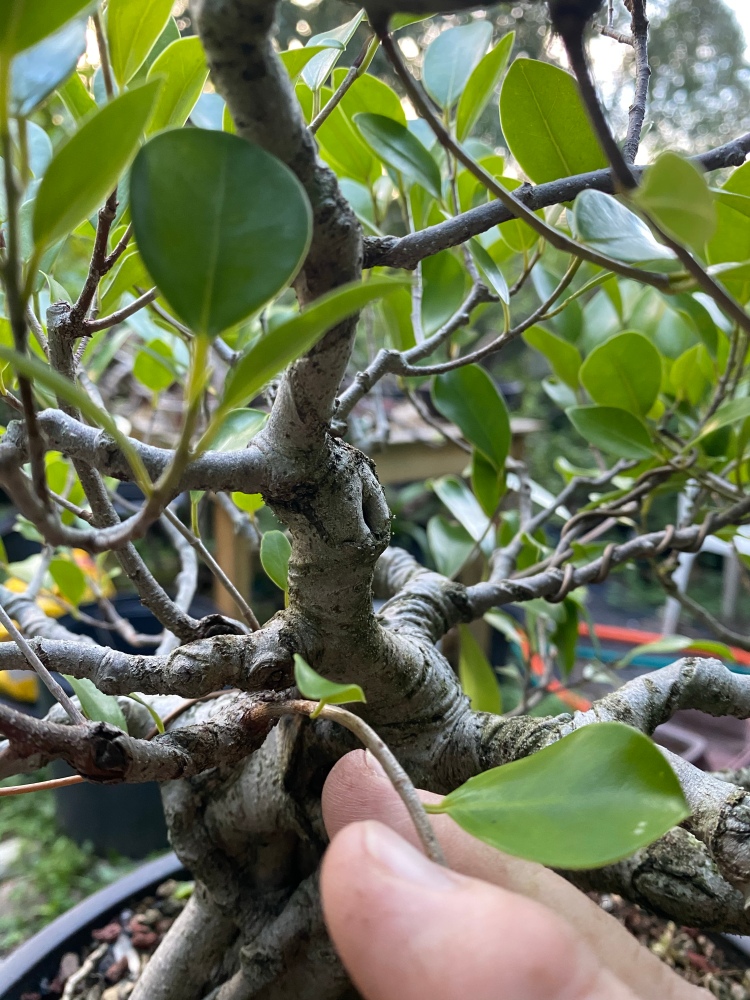
I’ve helped out during our studygroup sessions but it was a collaboration with me as the minor partner. I’ve finally been able to bring it home to The Nook to have my way with it.
The previous work:
Below was where we took a cutting from the same tree and grafted it across a big chop scar.

I say “building a tree”. I can only do it the way I like it. I can try to make it so everyone likes it but that’s not possible. I don’t think you can make art that way.
The graft took on the bottom but it’s resisting the fusion on the top of the scar. 
You can see the successful fusion below.
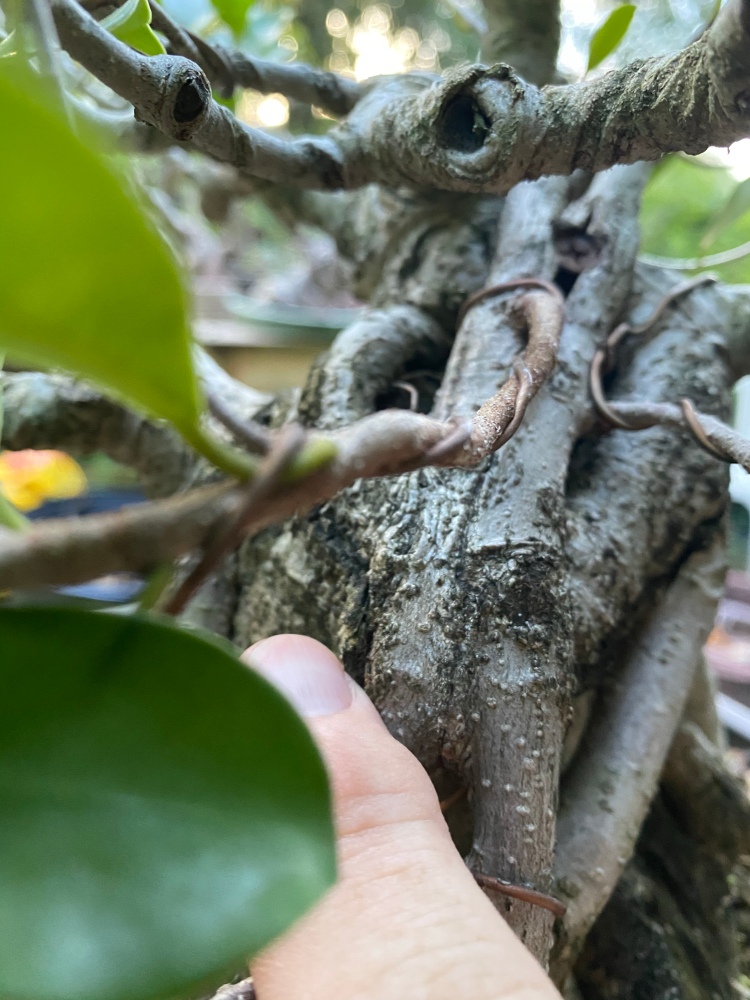
Working on this tree (this was done during the marathon 16 tree sessions from the last post) I realize that this is what I want to do. But I do it the least. I have so much to do with regular life, from cooking, cleaning, writing, and traveling.
And let me tell you, there’s nothing that’s more amazing than being on stage and taking a tree from nothing to something, and the audience being a part of that, but that lasts just a few hours. Being home and working on a tree in The Nook is what all the other responsibilities pay for.
On the tree, there will be the normal clean up, like below, I’ll simplify the branch structure down to only two at the tip, instead of the…let me see…2,3,5…ah, six.. branches you see below.

The bridge graft (to help close the chop scar) is pulling back at the top. Kathrin added a screw to help hold it down (pic below) but it’s even pulling up with it in place. So I need to figure out a solution.

Let me think….
I’ve realized I’m not ever going to be a Saburo Kato, or John Naka, or even a Kobyashi, or a Kimura, those men are giants and the time of the giants are over. We are journeymen and salarymen nowadays.
If I’m going to be doing bonsai, the artistic training I have is Western, not Eastern, and the experiences I have are my own. I grew up in the 80’s and 90’s in the USA. I’ll never be an apprentice polishing rice for the family meal in Japan. Or feeding the cats before my own meal (though I do that with my own cats) Bonsai has to be my way, with my eye, my preferences, in my backyard, in my climate.
My students and clients appreciate it. There’s nothing wrong with making people happy.
And that’s fine by me.
Ah. That little detour gave me an idea on how best to screw the tree.
Hah!
First step, unscrew the tree….

The old screw, a bit rusty.

New screw: longer, unblemished, and a more coarse thread, better to hold itself into the tree.

The problem it the head. The tree will still be able to pull up and not hold the cambium together for the graft so what I need is a washer of some kind.
Let me see….aha! This’ll work. It just happened to be on the floor and it seems appropriate for the times.

Some folding….
Looks like it fits…
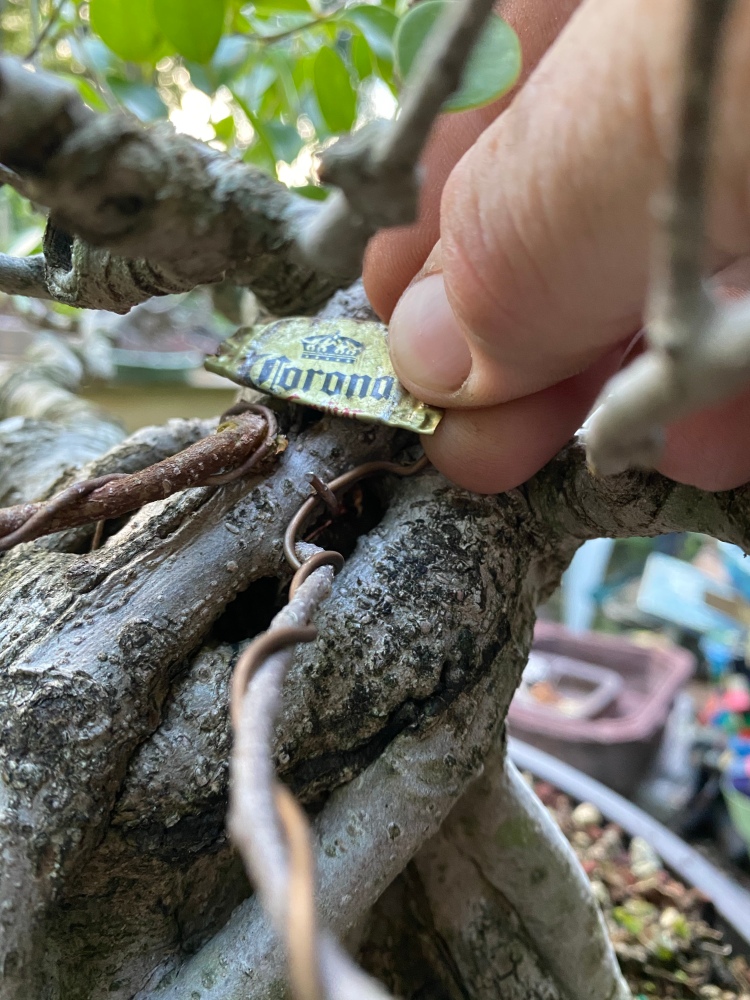
Drill a hole in the bottle cap, screw the screw tight (but not too tight so you don’t strip the wood out)
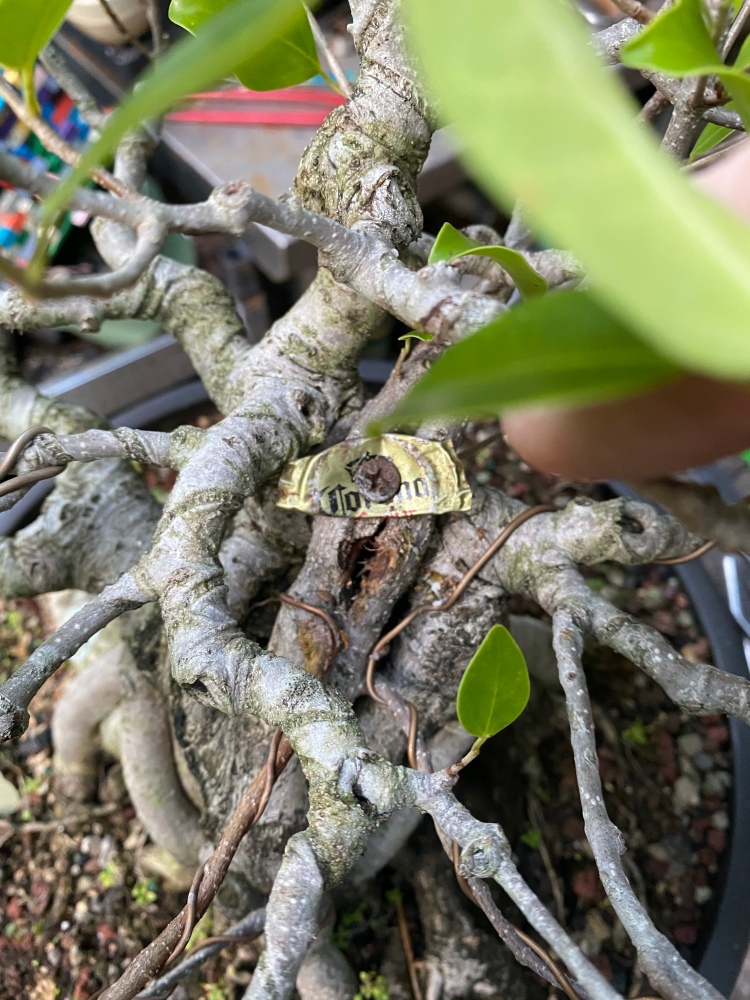 And that’ll do. If you look close, I didn’t use the original hole. I went a little above it. And I also scraped the edges of the trees cambium to help in the fusion.
And that’ll do. If you look close, I didn’t use the original hole. I went a little above it. And I also scraped the edges of the trees cambium to help in the fusion.
Next up, we need a branch up higher in the tree (the standard ficus microcarpa doesn’t backbud as well as a tiger bark or other varieties or F. microcarpa, hence the need for grafting. If it were tiger bark, I’d chop the top and let it sprout everywhere).
This sprout should work. If I can get it moved backward and underneath that branch just above it. 
I need a branch to be about here. But angled to the front, which is why it needs to go back and under and around. Wish me luck. 
Hey! Success!

That’s a good spot.
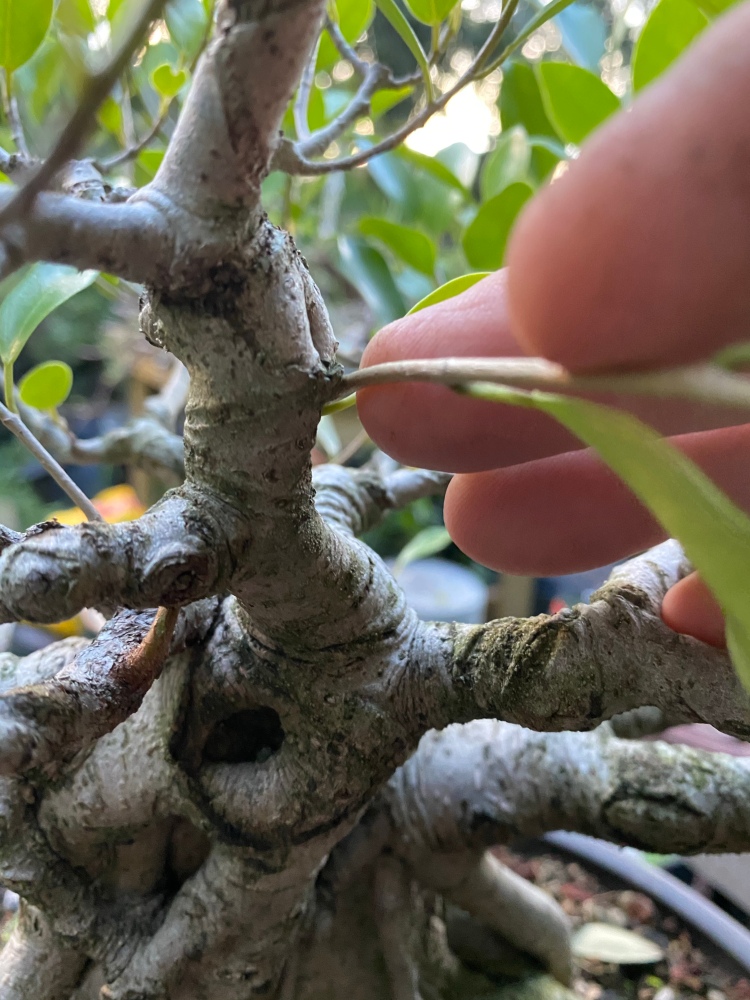
From behind.
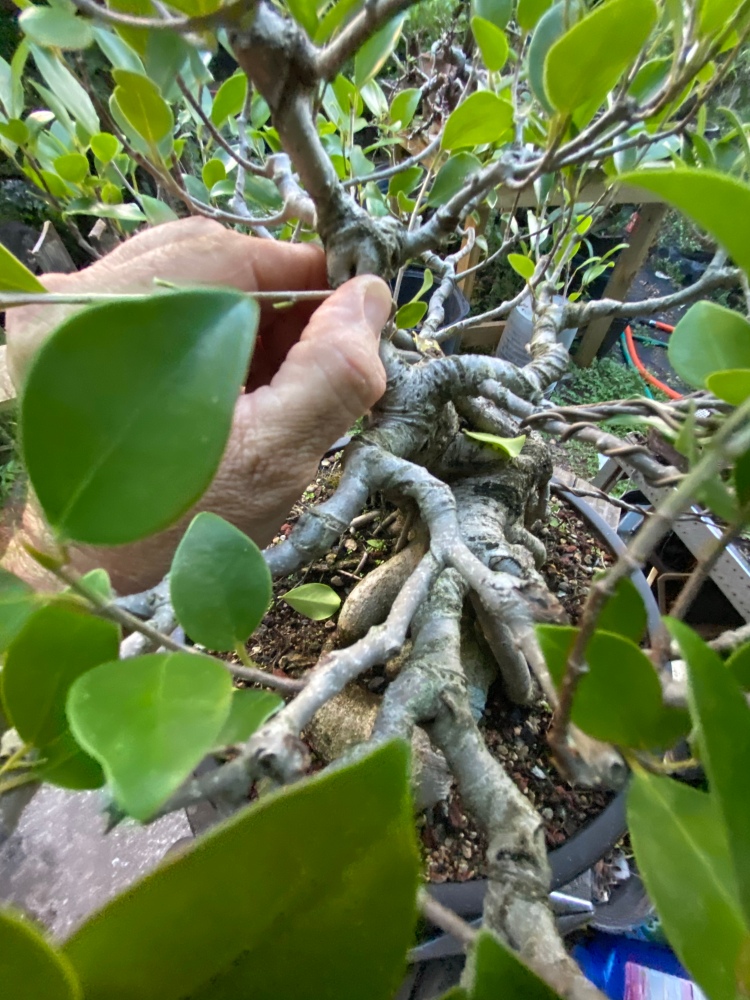
Grafting tape….
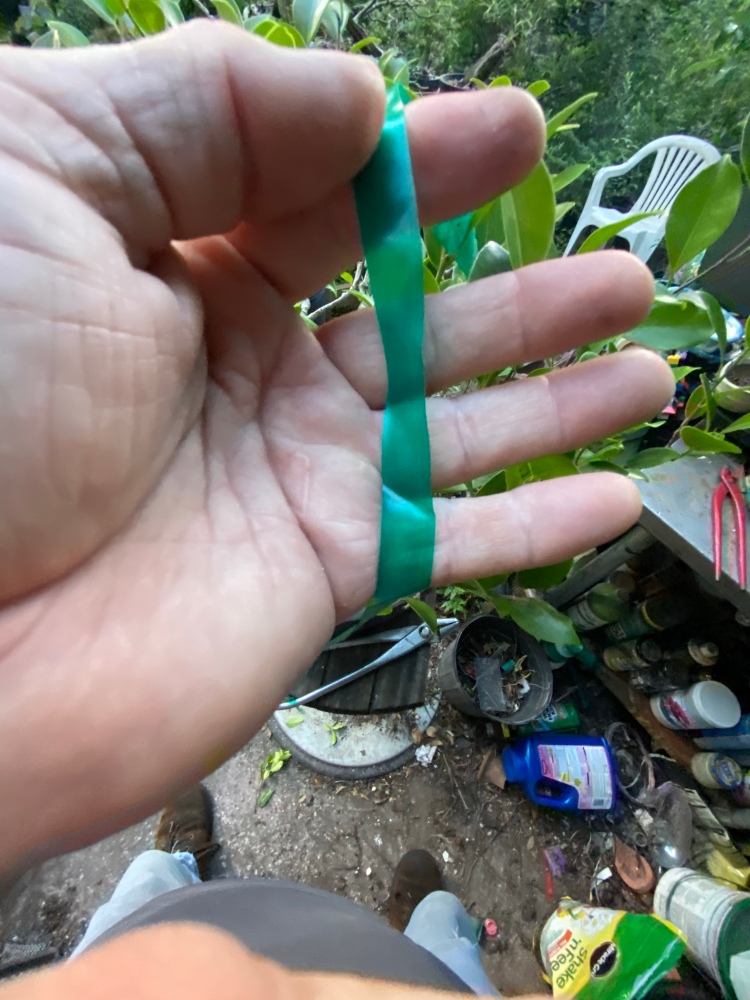
I made a cut in the bark of the trunk and, with one hand (I had to hold the graft in place with the other, and hold the camera with a third) I wrap and tie the tape in place.
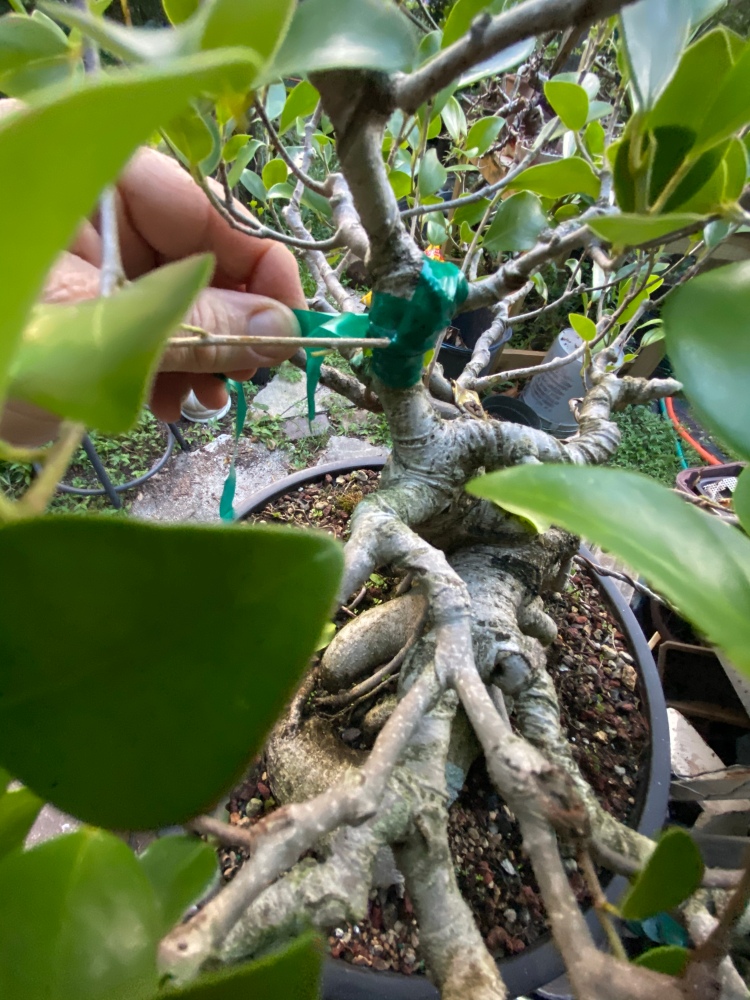
Skillz to pay the billz….

I impressed myself with that one as I have big fat sausages for fingers and I was able to tie it off.
 I’m known to occasionally tie one on at times, so maybe that’s how I was able to do it alone.
I’m known to occasionally tie one on at times, so maybe that’s how I was able to do it alone.

An interesting question comes to mind: does the enjoyment of something increase when a person knows how to create it?
I can sit and listen to music and I know how that drum beat is performed or what chords are being used.
Or eat a meal and know that the carrots are cooked before the squash or when the taste calls for the garlic first or the garlic last and the chef had done it in the correct order and not just thrown it all together.
But does that increase the enjoyment for me or is it better not knowing and being surprised and amazed at the result?
Anyway, grafting done….
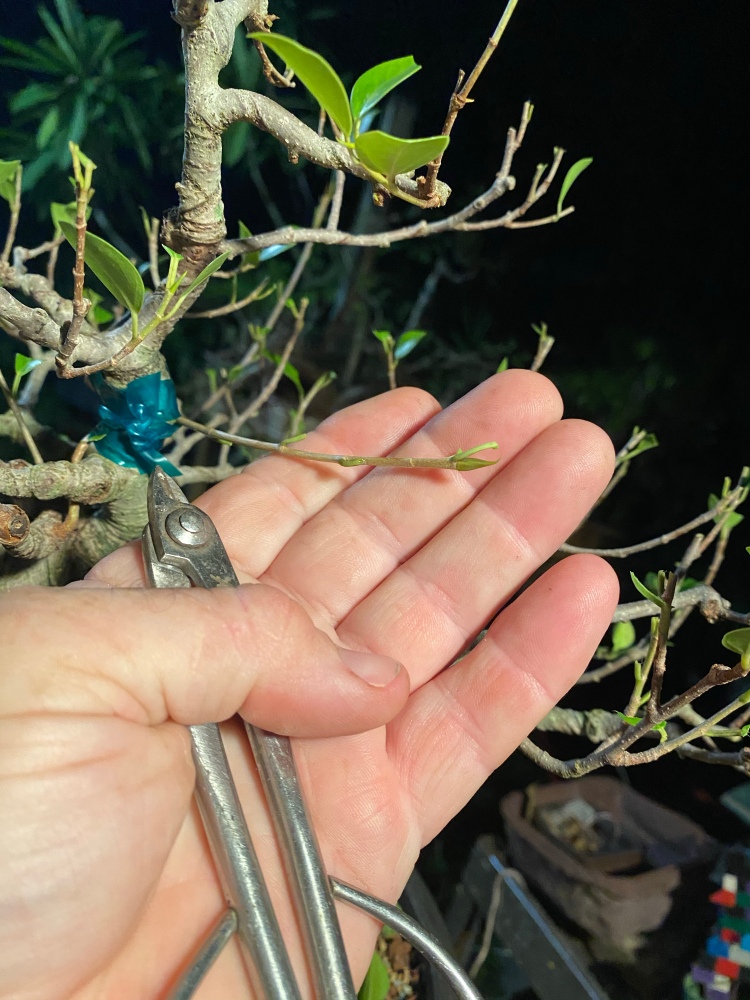
….so now it’s time to chop some roots.
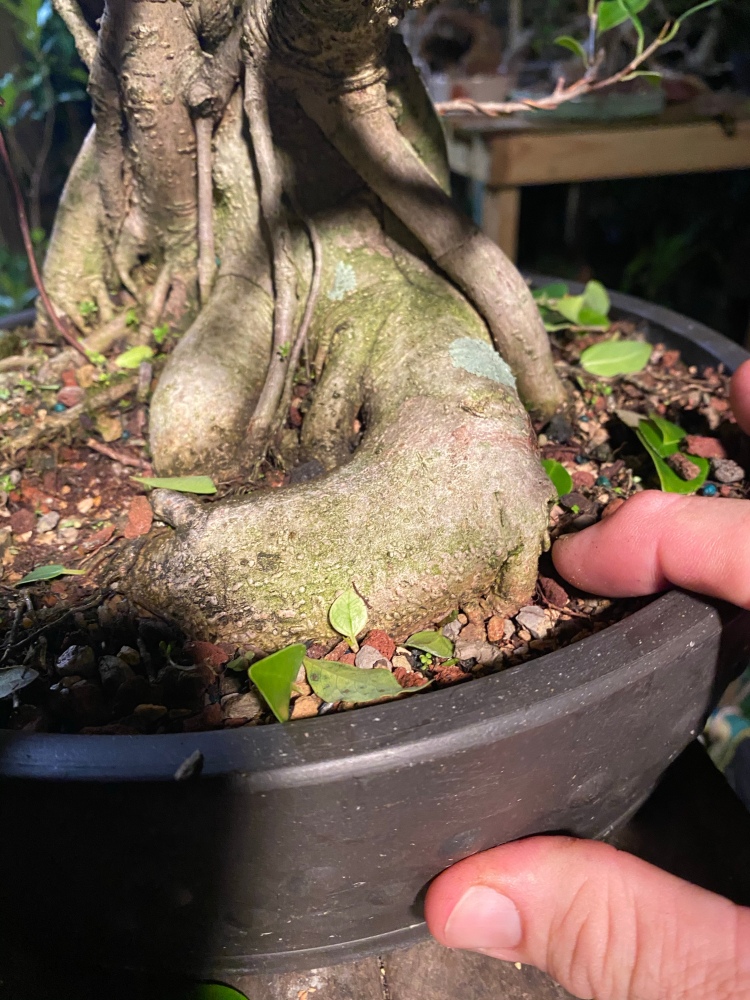
Out of the training pot…
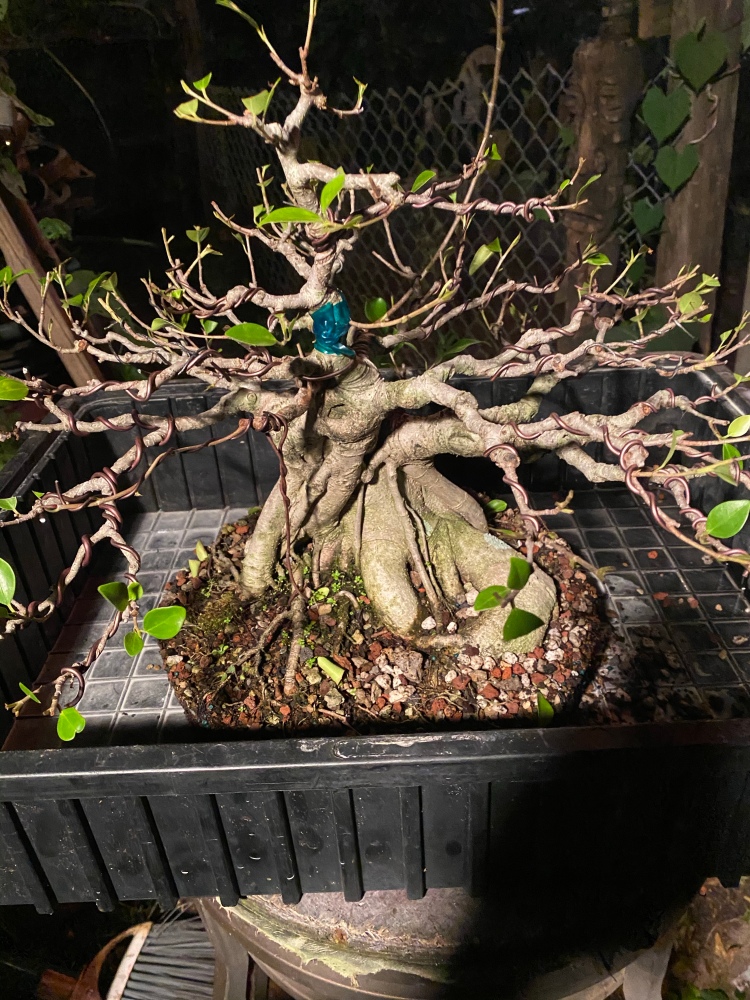
I think I’ll dust off my jig saw for tonights operation.
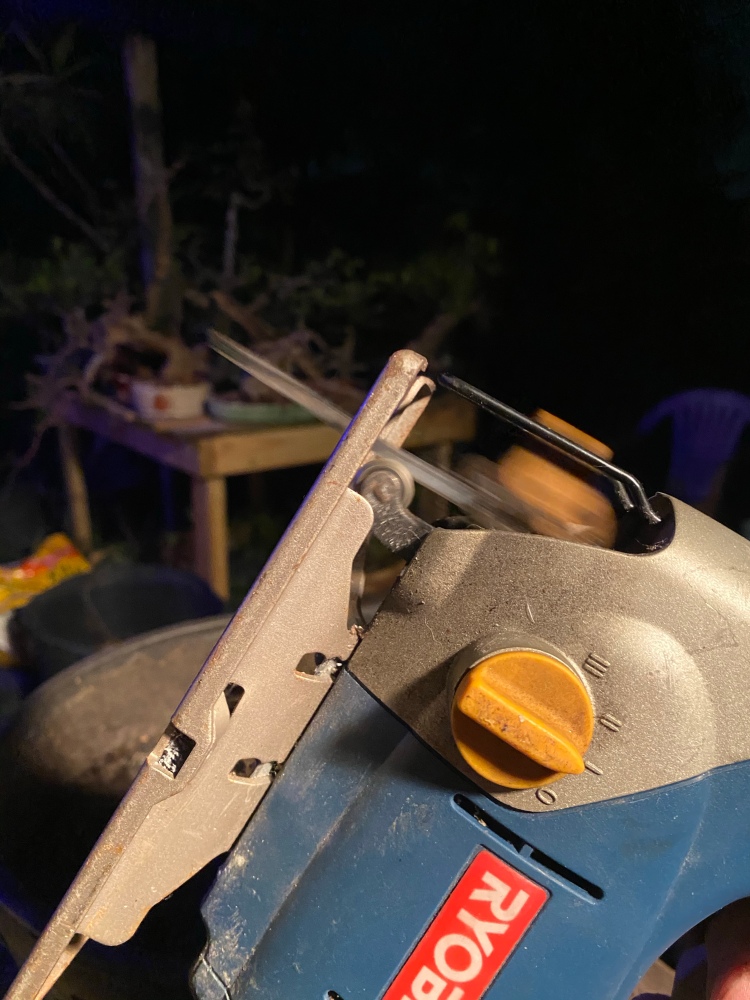
The excision sight.
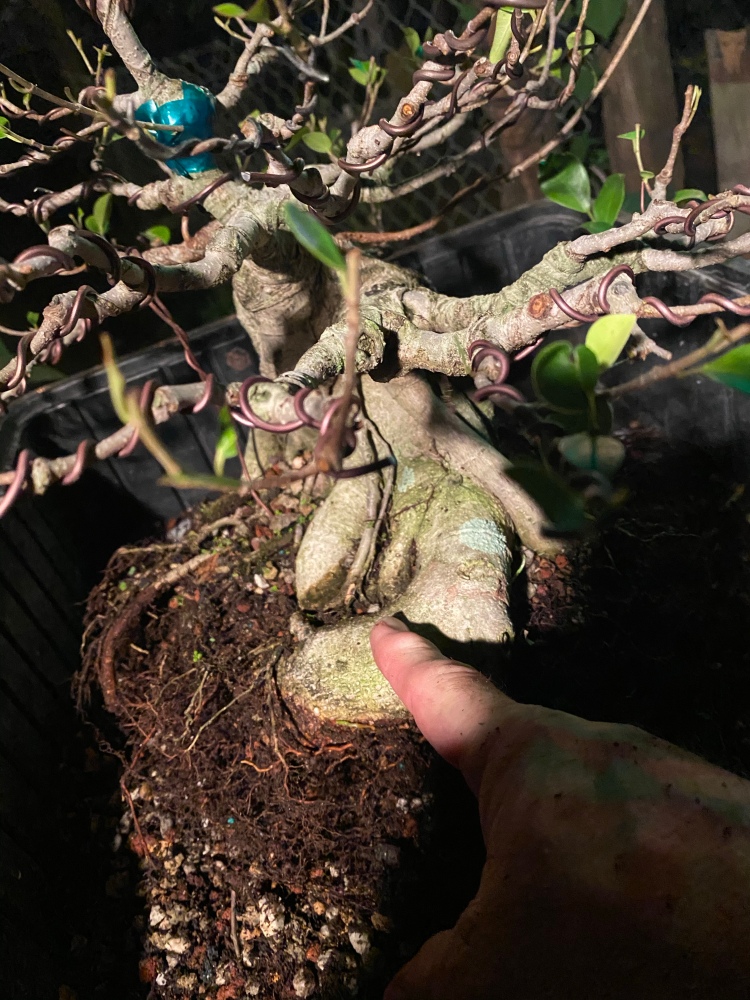
And the excised root!!

And now for the plastic surgery part.

For that I’ll switch to some hand tools.

Wedge cut achieved.

So here you are, dear reader, thinking I’ve butchered this poor root and it’ll rot off like a gangrenous toe off a zombie’s foot. Nope, here’s a (quick) fast forward into the future:
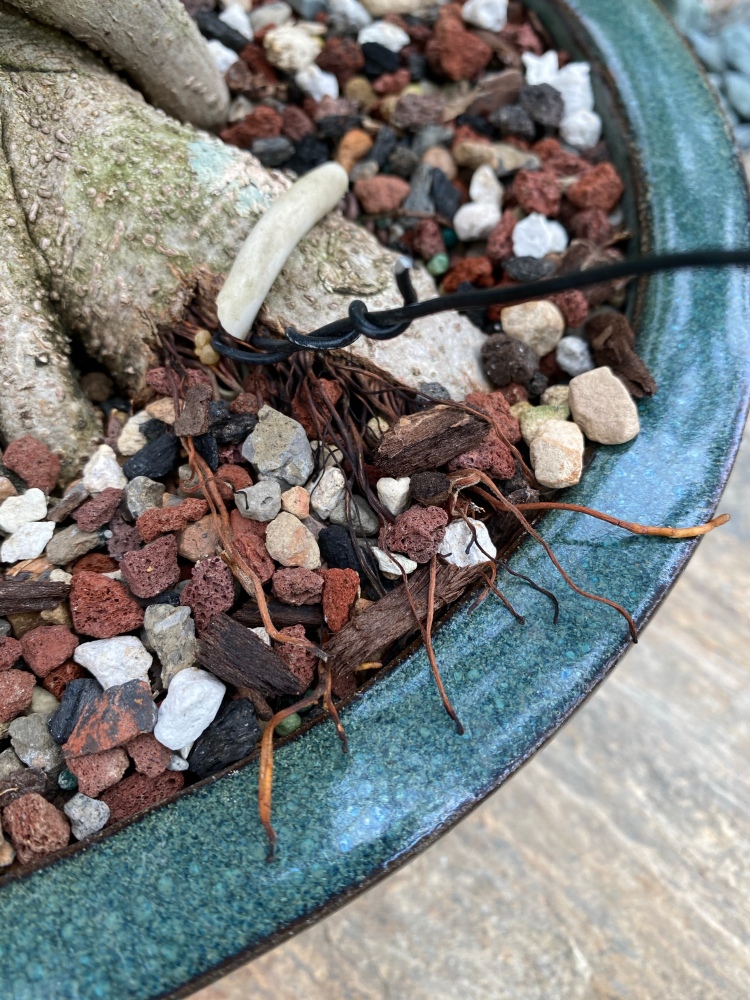
And now back to the present (obviously it’s been a few weeks, or maybe a month since I did the work, I’m a bit behind in the writing. I’ve been working on the latest edition of The Florida Bonsai Magazine, sorry)
I think this pot will work.
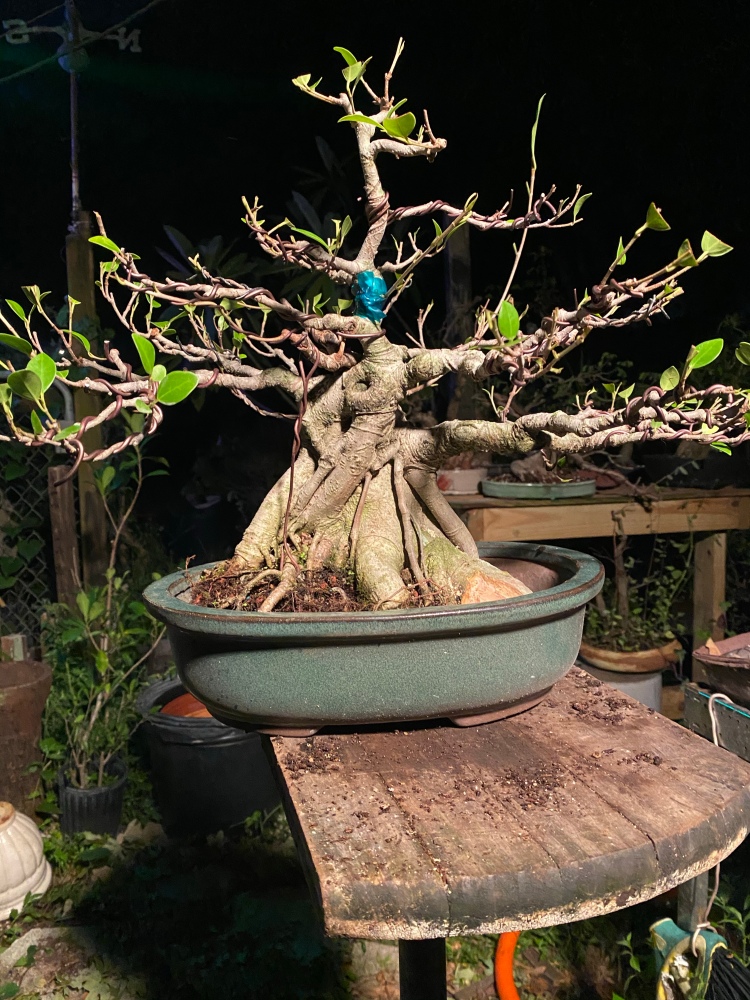
For contrast, here’s a rectangle.

The tree is soft, feminine, even though it has a big trunk, so an oval goes better with the design.
What do you think?

Ahhh, it’s Miller Time. 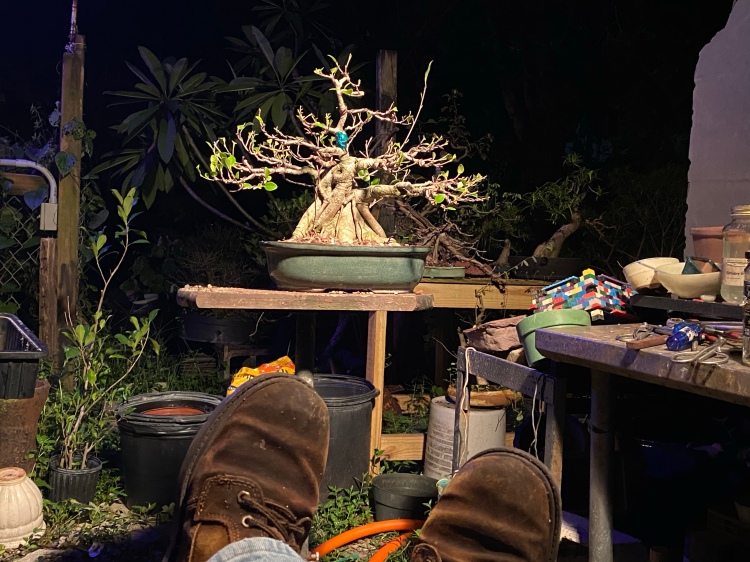
So I’m done. This is a bittersweet time though.
Sometimes being a bonsai working stiff has its advantages. I get to work on other people’s awesome trees and get paid for it, and I don’t have to water it when it goes back to its home. The bittersweet part is I don’t always get to see the tree again. Fortunately this tree is from Kathrin, and she’ll take good care of it and I’ll get to visit and work it again. Look for updates in the future.
Great post as always. That’s an awesome technique with the ol’ screw n pop top.
I’m interested to hear if you planted that large root cutting as I’ve seen how quickly you transform them into very unique material.
LikeLike
i WANT THAT SAW
LikeLike